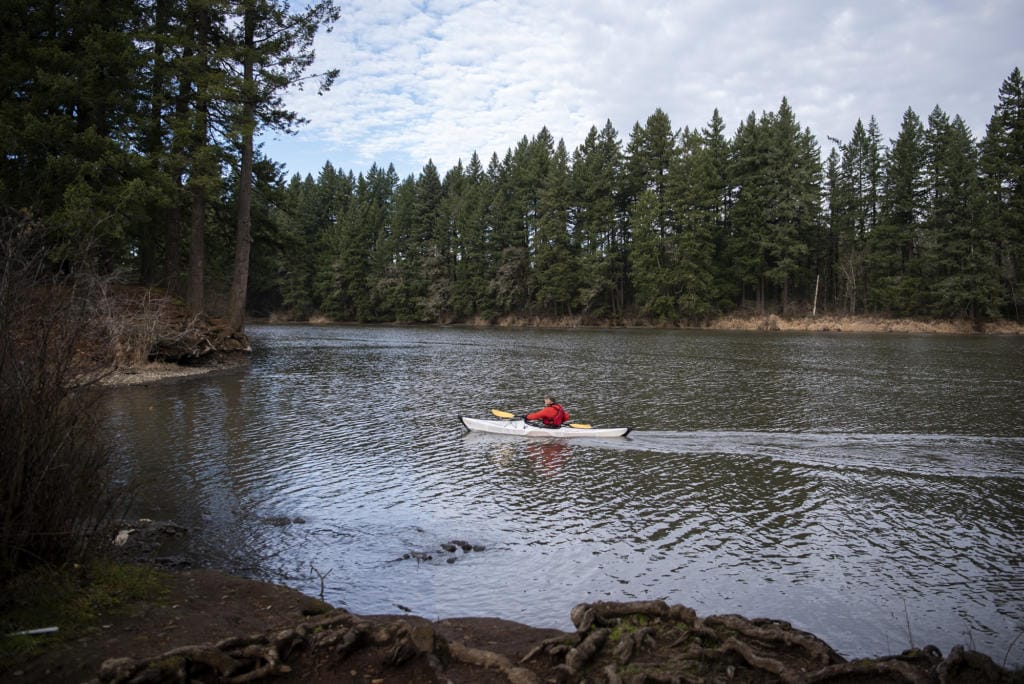Clark County residents fond of the open air may be headed to the water soon, with Gov. Jay Inslee lifting restrictions on some outdoor recreation. But officials have this warning after an unusually warm weekend: area lakes and rivers are still dangerously cold.
The cold, fast-moving currents of local waterways claim lives every spring and summer.
In August, a 14-year-old boy who had been swimming and jumping off a foot bridge into the water at Lacamas Lake died of an accidental drowning. A year earlier, in June, a man in his 40s was struggling in the water of the East Fork of the Lewis River and went under; after an exhaustive search, he was presumed to have drowned.
There were five unintentional drownings in Clark County in 2018, according to Washington Department of Health data. There were 11 such drownings four years earlier, the data shows. Those numbers include drownings in pools and bathtubs, however.
Clark County Public Health says there were a total of three drownings in natural bodies of water in the county last year. There were single drownings of this kind the previous two years, zero drownings in 2016 and two such drownings in 2015, according to the data.
Vancouver Fire Department Deputy Chief Tom O’Connor said crews respond to about six to eight unintentional drownings annually. That estimate includes incidents out of the city limits, as Vancouver crews are trained and equipped for more technical situations and are called upon by agencies here and outside the county for help, O’Connor said.
‘It’s not summer yet’
The county warned in a recent news release that lakes and rivers in Southwest Washington are cold enough to shock and immobilize the strongest of swimmers. The rivers are also high and swift from rain and snowmelt and may be carrying debris.
The Columbia River’s temperature is currently around 55 degrees, O’Connor said. The Washougal River is a couple degrees cooler, he said. Anything less than 60 degrees is considered cold, according to the deputy chief.
“In the Columbia, if you’re submerged, you can lose dexterity within minutes,” O’Connor said. “It’s not summer yet. The rivers are in spring flow.”
People are asked to avoid fast-flowing waters, including rivers and beaches with riptides.
“Know your limits. Drowning often occurs when a swimmer tires. Don’t swim alone,” the news release says.
In addition to keeping an eye on river conditions, Clark County Public Health is urging people to follow these tips for safe swimming:
- Never leave children unsupervised in or near water. Drowning can happen quickly and silently. Supervision requires complete attention, even if another adult is present.
- Wear a life jacket when swimming anywhere without lifeguards or whenever on a boat, personal watercraft, inner tube or other water sport equipment.
- Ensure children always wear life jackets. Inflatable toys do not keep children safe. By law, children 12 and younger must wear a U.S. Coast Guard-approved life jacket or vest on all boats that are 18 feet or smaller.
- Avoid using alcohol and marijuana when swimming or boating.
- Don’t dive into shallow water or jump off of bridges or cliffs.
- Swim in designated swimming areas only. Signs will be viewable letting you know when and where it’s safe to swim.
Blue-green algae dangers
Another present danger to look out for in the county’s waters is blue-green algae, which can be harmful to humans and pets.
Cyanobacteria, more commonly known as blue-green algae blooms, have already been identified at several bodies of water in Clark County this year, and it is likely to appear throughout the summer and into the fall.
In late April, Public Health closed Lacamas and Round lakes after test results revealed elevated levels of cyanotoxins in the water. On Friday, the advisories for the lakes were downgraded from “danger” to “caution.”
The danger signs at the lakes will be replaced with caution signs, which will remain in place as long as the blooms are present. Still, health officials say people should avoid direct contact with water in areas with floating blue-green-colored scum.
People should not drink, wade or swim in water that looks discolored or appears to have algae in it. Skin exposure by direct contact to water containing the toxic algae can cause rashes, itching, blisters and eye irritation. Inhaling the toxins can cause wheezing, coughing, chest tightness and shortness of breath. Rinse off with clean water and seek medical help right away.
Pets, especially cats and dogs, may not hesitate before swimming or drinking water, even if algae is present. Animals are also at risk if they lick algae caught in their fur after being in the water or eat dried clumps of algae along the shore, according to Public Health.
Lower levels of toxins can have severe, sometimes fatal, effects on animals, due to their smaller body mass than humans. Animals can experience symptoms within minutes to days following exposure. Symptoms include vomiting, diarrhea, weakness, difficulty breathing, seizure or death.
Before heading out into the sun, check for advisories on Public Health’s swimming webpage. There should also be signs at locations where blooms have been detected.




